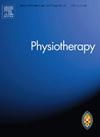新西兰物理治疗师对肩部疼痛的诊断和管理:一项全国性调查
IF 3
3区 医学
Q1 REHABILITATION
引用次数: 0
摘要
背景物理治疗师通常处理肩部疾病患者。本研究的主要目的是:(1)确定目前新西兰物理治疗师对肩部疾病患者的评估和管理,并将其与循证建议进行比较;(2)评估他们做出诊断的信心。方法我们对新西兰注册物理治疗师进行了一项横断面在线调查,他们自我报告他们治疗过肩部疾病患者。该调查通过专业物理治疗网络和社交媒体进行电子分发。物理治疗师被问及四种常见的肩部疾病(肩袖肌腱病,急性肩袖撕裂,粘连性囊炎的早期和后期表现)。结果共234名物理治疗师完成调查。大多数(78%)在私人诊所工作,73%的人每周承担的病例量≥5例。参与者通常包括肩部和颈椎关节的身体检查。调查和转诊到其他医疗保健专业人员之间的小插曲有所不同。建议、运动教育、手工疗法和活动/工作调整是最普遍的干预措施。电疗是治疗肩袖肌腱病的常用干预手段。大多数物理治疗师在所有的小插曲中对他们的诊断都有中度或极度的信心。高肩负荷和低肩负荷的物理治疗师的正确诊断在3个疗程内没有差异,对于急性肩袖撕裂,高肩负荷的物理治疗师有轻微的差异(90%对80%,Fisher’s p = 0.047)。结论物理治疗师对肩部疾病患者的自我报告处理部分符合循证建议。他们对自己的诊断很有信心,这些诊断大多是正确的。•新西兰的物理治疗师对肩部疾病患者的管理部分符合循证建议。•新西兰的物理治疗师对他们的诊断很有信心,他们的诊断大多是正确的。•对于4个临床小插曲中的3个,我们发现低肩负荷和高肩负荷参与者的正确诊断没有差异。•更大比例的低肩病例临床医生会要求MRI检查粘连性囊炎的早期临床表现。本文章由计算机程序翻译,如有差异,请以英文原文为准。
Diagnosis and management of shoulder pain by New Zealand physiotherapists: a national survey
Background
Physiotherapists commonly manage patients with shoulder disorders. The primary aims of this study were to (1) determine current assessment and management of patients with shoulder disorders by physiotherapists in New Zealand and compare it to evidence-based recommendations; and (2) assess their confidence in making a diagnosis.
Methods
We performed a cross-sectional online survey of New Zealand registered physiotherapists who self-report that they treat patients with shoulder disorders. The survey was distributed electronically via professional physiotherapy networks and social media. Physiotherapists were asked about four common shoulder disorders (rotator cuff tendinopathy, acute rotator cuff tear, early and later presentation of adhesive capsulitis) presented as vignettes.
Results
234 physiotherapists completed the survey. Most (78%) work in private practice and 73% have a shoulder caseload of 5 patients per week. Participants commonly included physical examination of shoulder and cervical joints. Investigations and referral to other healthcare professionals varied between vignettes. Advice, education about exercise, manual therapy and activity/work modification were the most prevalent interventions. Electrotherapy was a common intervention for rotator cuff tendinopathy. Most physiotherapists were moderately or extremely confident in their diagnosis across all vignettes. There was no difference in correct diagnosis between physiotherapists with a high versus low shoulder caseload for 3 vignettes, with a slight difference favouring those with a high shoulder caseload for acute rotator cuff tear (90% vs 80%, Fisher's p = 0.047).
Conclusions
Physiotherapists self-reported management of patients with shoulder disorders partially accord with evidence-based recommendations. They have confidence in their diagnoses which are mostly correct.
Contribution of the Paper
- •Physiotherapists in New Zealand managed patients with shoulder disorders partially accord with evidence-based recommendations.
- •Physiotherapists in New Zealand have confidence in their diagnoses, which are mostly correct.
- •For 3 out of 4 clinical vignettes, we found no differences in correct diagnosis between participants with low and high shoulder caseload.
- •A greater proportion of clinicians with low shoulder caseload would request MRI for a clinical vignette describing an early presentation of adhesive capsulitis.
求助全文
通过发布文献求助,成功后即可免费获取论文全文。
去求助
来源期刊

Physiotherapy
医学-康复医学
CiteScore
6.40
自引率
3.00%
发文量
377
审稿时长
82 days
期刊介绍:
Physiotherapy aims to publish original research and facilitate continuing professional development for physiotherapists and other health professions worldwide. Dedicated to the advancement of physiotherapy through publication of research and scholarly work concerned with, but not limited to, its scientific basis and clinical application, education of practitioners, management of services and policy.
We are pleased to receive articles reporting original scientific research, systematic reviews or meta-analyses, theoretical or debate articles, brief reports and technical reports. All papers should demonstrate methodological rigour.
 求助内容:
求助内容: 应助结果提醒方式:
应助结果提醒方式:


